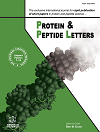
Full text loading...

Peak-shouldering elution behavior was a common and unexpected result in bind-and-elute mode Cation Exchange Chromatography (CEX), which may be due to the pH transition during the elution step and the aggregation tendency of target proteins.
Improving the concentration of acid-base pairs in the wash buffers or elution buffers without changing pH or conductivity effectively resolved the peak-shouldering issue in CEX.
In the case of molecule A, the shoulder peak was eliminated in the CEX run by increasing the NaAc-HAc concentration from 50 mM to 100 mM in the elution buffer or from 50 mM to 75 mM in the wash buffer. Higher NaAc-HAc concentrations affect the pH transition in the early stages of the elution step, which may explain the elimination of the shoulder peak. A similar result was observed for molecule B, where increasing the Tris-HCl concentration in the elution buffer from 50 mM to 80 mM also removed the shoulder peak during elution.
The successful elimination of peak-shouldering behavior by increasing acid-base pair concentrations highlights the critical role of buffer capacity in modulating pH transitions during CEX. While this strategy offers a simple and effective solution, further investigation is needed to assess its applicability across diverse protein types and buffer systems.
These results demonstrate that increasing the concentration of acid-base pairs in the elution buffer or wash buffer of CEX using NaAc-HAc or Tris-HCl buffers is an effective strategy for eliminating the shoulder-peak.